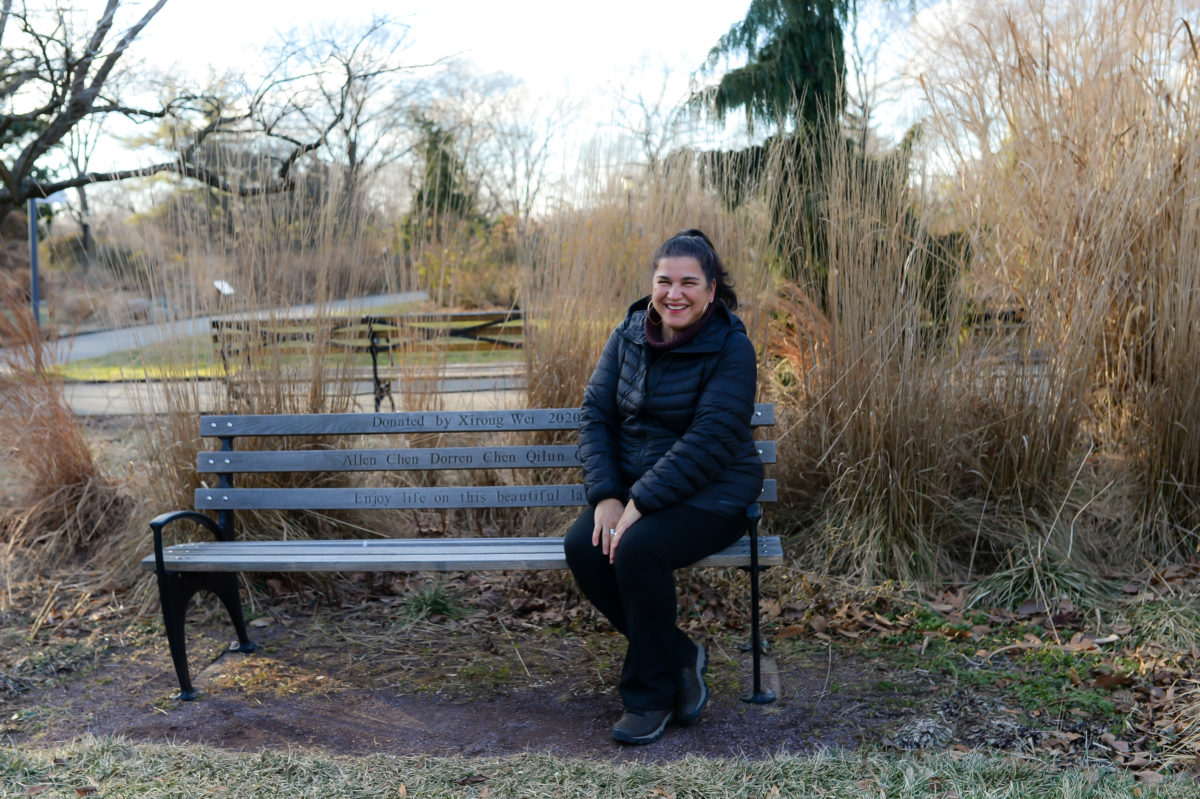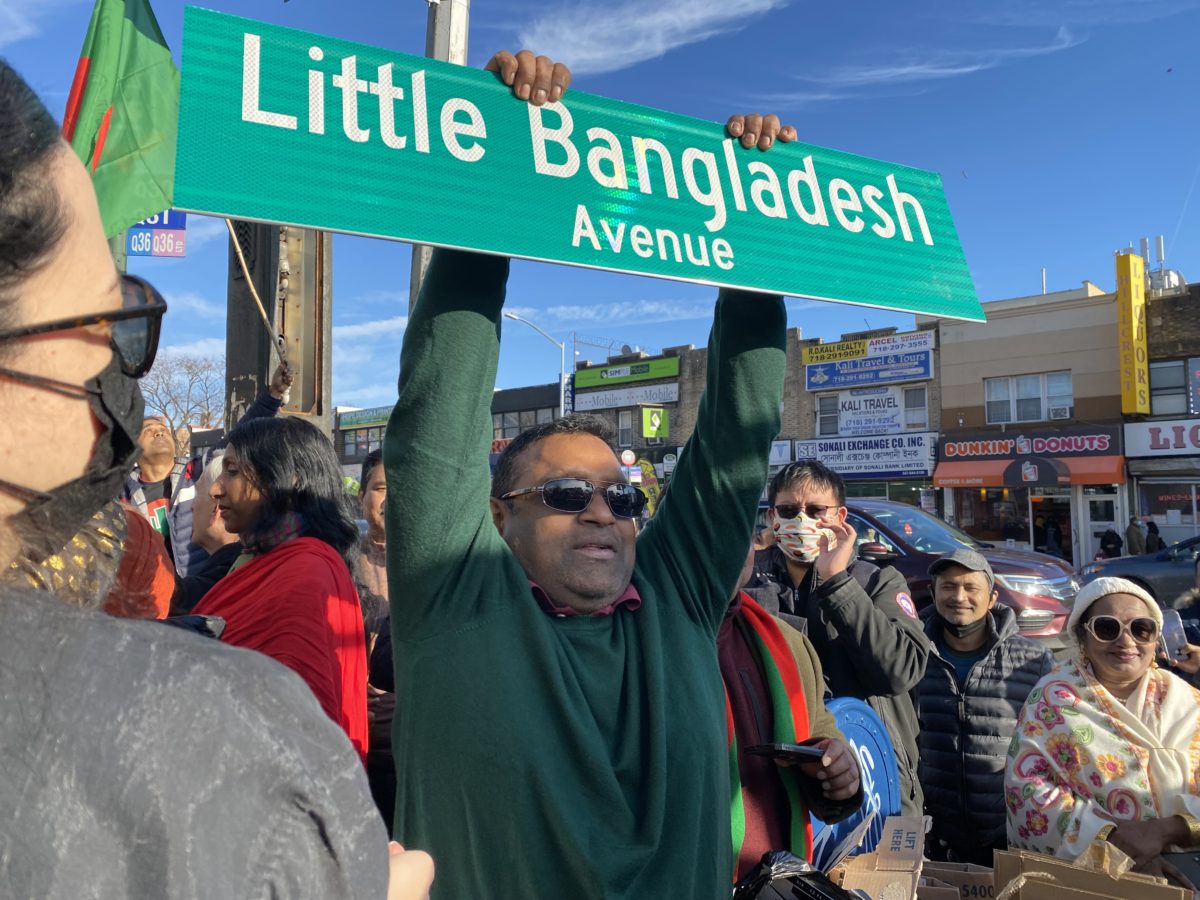New QBG head looks to take garden to next level
By Jessica Meditz
jmeditz@queensledger.com

Evie Hantzopoulos is the new executive director of the Queens Botanical Garen. (Photo: Eryn Hatzithomas)
Evie Hantzopoulos began her role as the executive director of the Queens Botanical Garden in late January, just in time to see her favorite plant, the red dogwood, in its prime.
In the same way the dogwood’s stems turn a beautiful bright red in the winter, Hantzopoulos brings a bright new perspective to the 39-acre oasis in Flushing.
She fills the shoes of Susan Lacerte, who held the position for 27 years and brought the garden back to life during a time of crisis.
“I’m super grateful for the work Susan has done, like helping to make the new Visitor and Administration Building happen and expanding the collections,” said Hantzopoulos. “Now I think about how I can build on her incredible work and honor the work that she did, and then really work with the staff and the community to take the garden to the next level.”
Originally from Massachusetts, Hantzopoulos lives in Astoria with her husband and three children, and has called Queens her home for nearly 24 years.
Although her background is not in environmental horticulture, Hantzopoulos feels passionately about gardening and environmental causes.
“My parents were both farmers when they lived in Greece, and they brought a lot of that knowledge with them when they came here,” she said. “I garden in my backyard, and when my kids were younger I helped bring gardens to their schools.
“I know a bit as an amateur, but I’m going to be learning a lot in terms of horticulture and working in the garden,” she added. “I’m very grateful we have experts here who really know their stuff.”
Hantzopoulos has extensive experience managing nonprofits. She served has worked at Global Kids for the last 25 years, the final 11 years serving as executive director.
Global Kids is a nonprofit organization that works with kids in all five boroughs, focusing on youth development, civic engagement and global education in underserved communities.
In addition to developing the organization’s programs and expanding its outreach to different cities, Hantzopoulos spent time mentoring educators and teaching workshops.
“Children add a perspective to the conversation that is really meaningful and critical,” she said. “Everyone questions how much they know, but children have thoughts, ideas, experiences and viewpoints that should be listened to, because a lot of times it’s their future we’re talking about.”
Hantzopoulos is excited to continue her journey as an educator through her new role at the Queens Botanical Garden, especially with a $34 million state-of-the-art Education Center on the horizon.
The building, which is expected to break ground in the fall, will allow staff to serve more than double the amount of people through expanded programming.
“Right now, our education building is not serving our needs,” said Hantzopoulos. “It’s very limited.
“Also during COVID, there’s limitations on how many people we can have in the building,” she added. “This new building is going to be designed to be adaptable, with indoor and outdoor classrooms.”
Hantzopoulos has been a member of Community Board 1 since 2010, and also co-founded Frontline Foods Queens, which distributes meals to frontline workers, NYCHA residents and food pantries.
She is a founding member of Astoria Mutual Aid Network, Astoria Urban Ecology Alliance, and 31st Avenue Open Street.
She recently ran in the Democratic Primary for City Council in Astoria.
“The experience was certainly different than anything I’ve ever done before, and I learned a lot,” Hantzopoulos said of the campaign. “Now I’m figuring out how to serve the city and community in a different capacity.”
Hantzopoulos acknowledged that although the garden looks a bit different during the colder months, it is still a serene escape from the chaos of Flushing’s busy streets.
She feels optimistic about the warmer months to come, as indicated by the 2,500 people who attended the recent Lunar New Year celebration at the garden.
But most of all, Hantzopoulos is grateful to be able to wake up every morning and go to work at such a beautiful place.
“I wanted to pick a place where I could fully get behind its mission and potential, as well as somewhere that I could marry my different interests,” she said.
“I found a great group of people and a beautiful space that so many people love,” she added. “Now, it’s about working with the team to figure out how to build upon the foundation and really showcase just how special of a place it is.”




